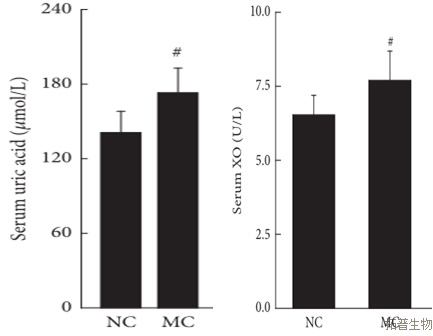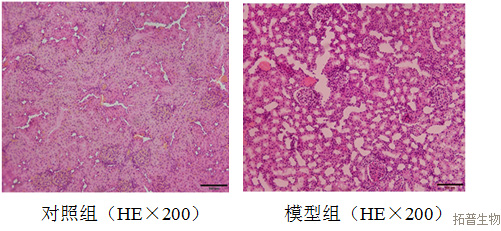A rat model of hyperuricemia
Hyperuricemia is a metabolic disease of the body mainly characterized by purine metabolism disorders. It is the biochemical basis for gout, gouty nephropathy, and uric acid stones, and is closely related to various metabolic diseases in the human body. Hyperuricemia easily leads to uric acid nephropathy, which is caused by the deposition of urate salts in the renal medulla, surrounded by white blood cells and macrophages, leading to chronic interstitial nephritis. In the late stage, renal failure can be caused by tubular degeneration, atrophy, and glomerulosclerosis. Animal experiments are of great significance for studying the pathogenesis of hyperuricemia, pathological research on gout, uric acid nephropathy, and other related diseases caused by hyperuricemia, as well as the development of new drugs for treating hyperuricemia.

Observation indicators
Serum uric acid, XO; renal function indicators (such as Scr, BUN) and pathological examination
Partial Results Display




